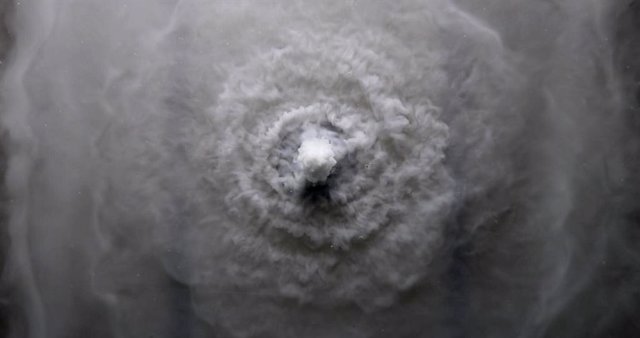11 Apr. (EUROPE PRESS) –
Material left on the seabed by Bronze Age submarine volcanic eruptions is helping to better understand the size, hazards, and climate impact of its parent eruptions,
About 3,600 years ago, the eruption of a semi-submerged volcano in the southern Aegean Sea devastated the island of Santoriniinjecting ash, rock, and gases into the atmosphere and depositing miles of terraced sediments on the seafloor.
This catastrophic eruption, and others like it, have traditionally been associated with sudden climate changes, but the minor climate impacts of more recent submarine volcanic eruptions, such as the Hunga Tonga-Hunga Ha’apai eruption in 2022, They have questioned that theory.
Now, a multi-year study of Santorini’s ancient volcanic deposits is unraveling the nature of these huge caldera-forming eruptions and providing new clues about how future eruptions might affect Earth’s climate.
During massive eruptions, volcanic plumes traverse the shallow seas in the form of jets of ash, rocks, and gases that rise tens of kilometers into the atmosphere. But until now it was not known exactly how and how much of this material reached the surface of the sea or the ground.
“We have shown that the architecture of volcanic deposits in subaerial and submarine environments can be used to quantitatively constrain the dynamics of the eruption that took place there, including the vent source and environmental conditions,” says Dr Johan Gilchrist, a researcher at the University of British Columbia (UBC) and lead author of the study, which is published in Nature Geoscience.
“The study also provides crucial lower bounds on the strength of eruptions, the heights of the jets, and the frequencies and sizes of sedimentation waves linked to terraced deposits,” he continues. “That will help us predict the evolution of the hazards during these caldera-forming eruptions and to understand the surprisingly small climate impact of similar events.”
Together with UBC Earth and Planetary Scientist Dr Mark Jellinek, Dr Gilchrist analyzed the concentric terraces that remain around the Santorini caldera, historically called the Minoan eruption. They found that the width of the terraces decreases with increasing distance from the vent, and that they slope upward toward the caldera wall, consistent with other terraced caldera deposits. The terraces near the caldera wall are also much wider than those found in calderas from purely submarine or subaerial eruptions.
Gilchrist had a hunch that sedimentation waves that periodically collapsed around the volcanic jet spread out where they impacted the water surface during shallow submarine eruptions.
To verify the hypothesis, the researchers injected particles into shallow layers of water to mimic the Minoan underwater eruption. Experiments showed that descending sedimentation waves caused by eruptions in shallow waters can impact and propagate on the sea surface to create tsunamis and also undermine the seafloor, depending on the force of the eruption and the depth of the water.
The terraced deposits left a fingerprint of what happened during the eruption, the size of the sedimentation waves, and how they interacted with the water and seafloor.
“The boundaries revealed by this study will guide a new generation of hydrovolcanic climate models to understand how the mass partitioning properties of eruptions such as Hunga Tonga-Hunga Ha’apai — the largest and most impressive volcanic events in the record geological– minimize their effects on climate change,” notes Dr. Jellinek.
For his part, Dr. Gert Lube, a volcanologist at Massey University (New Zealand), who was not involved in the study, stresses that “for the case of the three submarine caldera-forming eruptions, this study provides the first direct relationships between the architecture of the deposit and the conditions of the original eruption”.
“The results of this study are intriguing and could possibly be extended to non-marine, caldera-forming, and smaller eruptive events,” he concludes.








![[Img #74662]](https://thelatestnews.world/wp-content/uploads/2024/12/Organisms-with-the-shortest-life-150x150.jpg)





![[Img #74662]](https://thelatestnews.world/wp-content/uploads/2024/12/Organisms-with-the-shortest-life-300x200.jpg)
